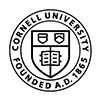Patellar Tendon Repair
Dr.Garcia demonstrates his distal patella tendon repair technique
Dr. Garcia featured on KOMO Sports Radio talking about advances in patella tendon repair. Listen to him below talk about the cutting edge repair techniques and how we are getting athletes back faster.

Disease Overview – Patellar Tendon Rupture
Patella tendon rupture is the rupture of the tendon that connects the patella (kneecap) to the top portion of the tibia (shin bone). The patellar tendon works together with the quadriceps muscle and the quadriceps tendon to allow your knee to straighten out.
When the patellar tendon tears, the patella may lose its anchoring support to the tibia, as a result, when the quadriceps muscle contracts, the patella may move up into the thigh. You are unable to straighten your knee and upon standing the knee buckles upon itself. In addition to this, you may have pain, swelling, tenderness, a tearing or popping sensation, bruising, and cramping.
Patellar tendon tear can be a partial or a complete tear. In a partial tear, some of the fibers in the tendon are torn, but the soft tissue is not damaged. In a complete tear, the soft tissues are disrupted into two pieces.
Treatment of Patellar Tendon Rupture
Patellar tendon rupture can be treated by non-surgical and surgical methods. Non-surgical treatment involves use of braces or splints to immobilize the knee. Physical therapy may be recommended to restore the strength and increase the range of motion of the knee.
Check out Dr. Garcia’s podcast on the NBA draft and what team doctors do to prepare and analyse players injuries.
Dr. Garcia demonstrates his technique for patella tendon repair.
Patellar Tendon Repair
Surgery is performed on an outpatient basis and not arthroscopically, since the tendon is present outside the joint. The goal of the surgery is to reattach the torn tendon to the knee cap and to restore normal function in the affected leg. The procedure is performed under regional or general anesthesia and an incision is made on the front of the knee to expose the tendon rupture. Holes are made in the patella and strong sutures are tied to the tendon and then threaded through these holes. These sutures are tied in place to pull the torn edge of the tendon back to its normal position on the kneecap.
Severe damage can make the patellar tendon very short, and in such cases, reattachment will be difficult. Your surgeon may attach a tissue taken from a donor (allograft) to lengthen the tendon.
Postoperative Care following Patellar Tendon Repair
Following surgery, a brace may be needed to protect the healing tendon. Complete healing of the tendon will take about 6 months.
Risks and Complications of Patellar Tendon Repair
Complications after the repair include weakness and loss of motion. In some cases, the tendon which was re-attached may detach from the knee cap or tears may also recur. Other complications such as infection and blood clot may be observed.




















